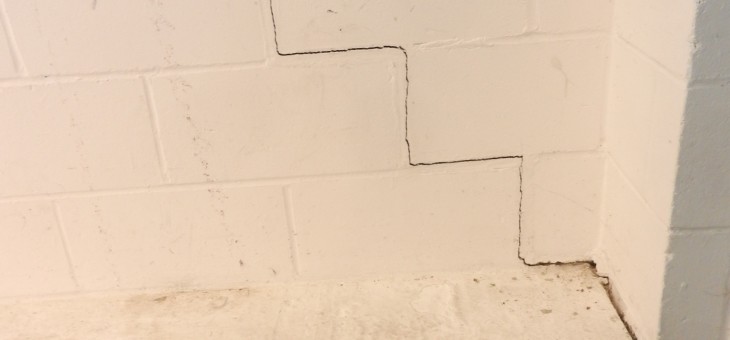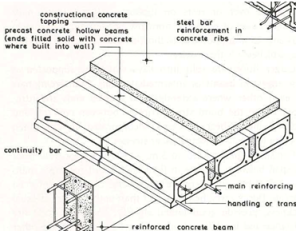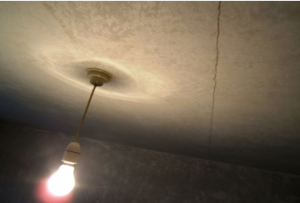Cracks are scary, there is no denying it, but as a chartered surveyor, I know a crack isn’t always a reason to panic. We’re starting this series with pre-cast concrete cracks but I’ll be looking at the different types of cracks you might come across, how serious they are, and what to do about them.
- Purpose-built flat with pre-cast concrete floors / ceilings composed of concrete planks bolted together.
This construction was very popular in the 1970s and 1980s and you’ll see these flats scattered across any town or city you care to mention.
How to spot one? Look out for the boxy shape and solid floors.
Why does pre-cast concrete cause cracks?
Because concrete tends to shrink over time, it’s quite common for the gaps between the concrete planks to open up slightly – creating a crack. Below is a section through a pre-cast concrete beam floor/ ceiling and an example photograph from a purpose built block.
Is shrinking concrete serious?
No. The shrinking will slow down and eventually stop over time, so the cracking to this flat is unlikely to become much worse. Concrete continues to ‘cure’ (the technical word for ‘set’) for 30 years – not in six days, which is a common misconception. This means that the cracking is only an aesthetic defect and not a structural one.
How common is this construction and is it all bad news?
It is extremely common to see pre-cast concrete planks in purpose-built blocks of flats and there are in fact many benefits to this form of construction.
The beams can easily be made away from site and then fixed into place, saving time. Services can also be run in between the planks and they can all be checked for strength and reliability, resulting in a consistent construction.
Don’t panic over pre-cast concrete cracks!
If you notice cracking of this nature then please don’t panic, it is highly unlikely that the ceiling is about to cave in at any minute! Take a step back and consider the construction and age of the property and be mindful that these defects are common and likely just aesthetic.
Naturally, if the cracks are getting worse our advice would be to instruct a Chartered Surveyor to carry out an inspection and report on the problem.
What next?
- Worried about cracks in a new building? Find out When It’s Ok To Plaster Over The Cracks
- Discover What Causes Black Mould in 1960s Purpose-Built Flats
- Check for these 9 Potentially Serious Defects in Your New Property




Comments are closed.